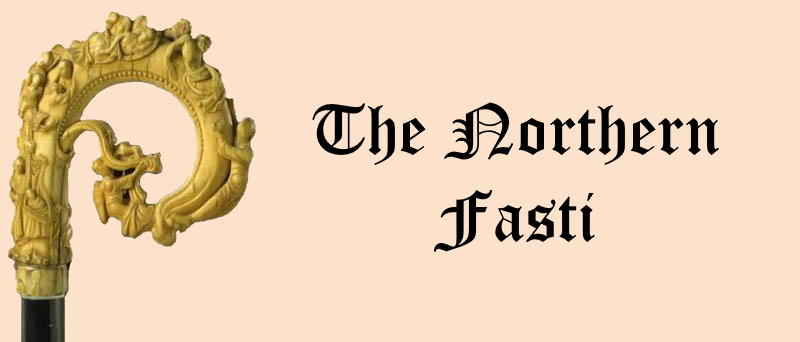Elgin Deanery
Dyke
Parish Church: OS Ref: NGR NH 990584 H.E.S. No: NH95NE 11 Dedication: St Ninian
Associated Chapels: Culbin {NGR NJ 012616}.
The name of this parish is given variously as Dich, Dike, Dyk and Kintessoc(k).1 It is also given as "Dyke & Moy" which, for some, leads to a certain confusion. The reader should be aware that the Moy being referred to here, in conjunction with Dyke, is not the parish of Moy that lies in Strathdearn
The earliest church at Dyke was associated with St Ninian, one of the first of the Saints to bring Christianity to these parts. The parish church was gifted to Richard, then Bishop of Moray, by King William the Lion (1189x95)2 and was afterwards part of the episcopal mensa.
The present church buildings are said to have been built in 1780-81, behind the site of the old Roman Catholic church. During this construction project, major finds were made - a fabulous 9th Century cross-slab (the Rodney Stone) and a hoard of 12th century coins.3 The slab was removed and now stands just inside the East Lodge entrance to Brodie Castle. The presence of this cross-slab and the ancient dedication to St Ninian is substantial evidence in favour of this having been a very early Christian site indeed. If we add Bain's comments to this evidence, that not only was there a "St Ninian's Chapel near the village of Dyke" but also that there was Moluag's Well nearby,4 then it is difficult not to accept this parish's most ancient credentials.
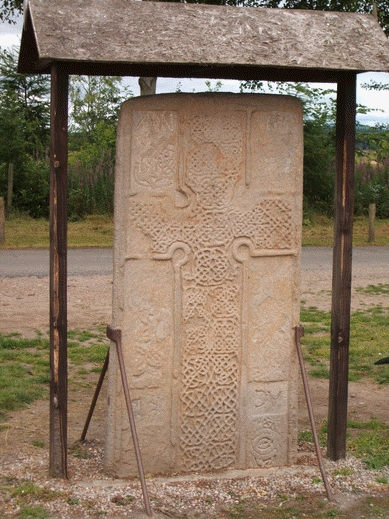
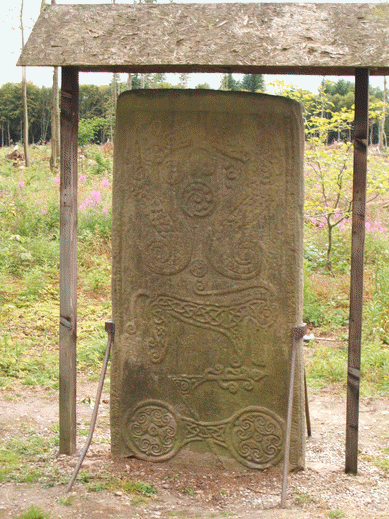
Originally, the right of patronage of the church of Dyke was held by the king. However, this must have proved to be a difficult arrangement and, after the bishop had de facto made presentations and instituted clerics to it (the king's approval only being given after the event), an approach was made in the king's name, to the Pope , to have any right that he had in the church converted for the use of the bishop and his successors. The Pope, Honorius III, agreed to the request in an instrument dated 10 February 1220, issued at Viterbo.5
The parish of Dyke contained two thanages - Dyke and Brodie - both of which paid 'second teinds' to the bishop.6 For many years, Dyke was the property of the Earls of Moray and many members of that family lie buried in the 'Moray enclosure' within the churchyard beside the parish church.
Grangehill in this parish was a property of the monks of Pluscarden and it is possible that they 'inherited' them at the time of the amalgamation of Urquhard Priory and Pluscarden Priory in 1454. This land is now called Dalvey,7 a change that was made c.1740 by the owner, a chieftain of Clan Donnachaidh, who had previously owned a property of the same name in Speyside.8
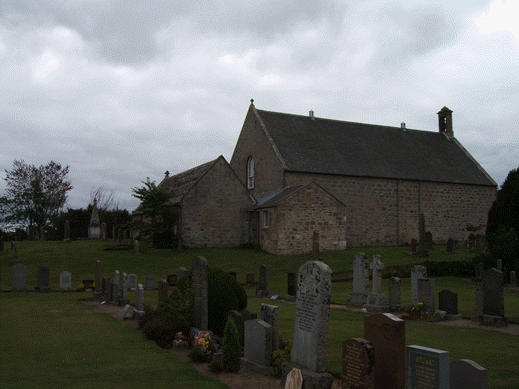
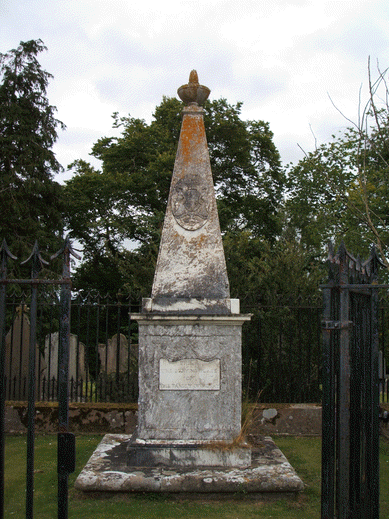
| Name | OS Grid Ref. | Extent | Property of | Comment |
|---|---|---|---|---|
| Grangegreen * | NJ 007590 | 8p. | Pluscarden Priory. | |
| Middle Binn | 5p. | |||
| Easter Waterside * | NJ 007589 | 4p. | Part of Grangegreen. | |
| Meikle Tearig | 3p. | |||
| Meikle Tearie in Darnaway Forest | NH 998568 | "Easter fourth part". | ||
| Eistertoun | 2p. | |||
| Terneway | NH 994551 | 0.5 dabhach | Darnaway | |
| Easter Binn | NJ 030629? | 2p. | ||
| Nether Binn | NJ 030629? | "auchten parts". | ||
| Kincorth | 2p. | |||
| Newtoun of Watersyde * | 2p. | Part of Grangegreen. | ||
| Wester Watyrside * | 2p. | Part of Grangegreen. | ||
| Blackhill of Moyness | NH 964528 | 2p. | ||
| Wester Watyrsyde | 1p. | Urchard then Pluscarden | In the Regality of Pluscarden. | |
| Halfdavoch | 0.5 dabhach? | |||
| Squaredoch | ? | |||
| Information from Ross (2003).9 * = part of the Regality of Urchard. / p = ploughgate |
||||
The two separate medieval parishes of Dyke and Moy were not conjoined until in 1618 and so, for the purposes of this Website, they are always treated separately.
1189 x 1195 King William I grants to R(ichard), bishop of Moray, the churches of Dich (Dyke) and Foreys (Forres) with an annual payment of £10 to be made from the firma burgi (burgh rents) of Elgin until such time as both Dyke and Forres become vacant. [RRS, ii., 360 & 361]
1386 (4 December) Instrument recording a meeting between Alexander, bishop of Moray, and members of the Brothi (sic.) family,10 namely Thomas Brothi and his eldest son John. Alexander de Brothy (who appears to be a younger son of Thomas) is to become the perpetual vicar of Dyke in succession to Johannem son of Colini who has resigned. One of the witnesses signing the instrument was Adam, chaplain of Dyke. [Moray Reg., no. 248]
Culbin. Mackinlay said that, "In Elginshire, S. Ninian had a chapel in the parish of Dyke".11
The first family of Culbin {the 'de Moravia' family}, not unmindful of what was required of them in religious matters, had in the earlier period a chapel of their own. It stood to the south of the House of Culbin (at Wellhill), and was dedicated to St Ninian. The Chapel Croft, or manse of the Chapel of St Ninian, is referred to in a succession of legal deeds.
The site of this chapel lies next to Kincorth House
It must be remarked here that the Barony of Culbin was, in its early existence, one of the most productive (and so most valuable) in all of Morayshire. The estate itself was called the "garden and granary of Moray".13
1386 (4 December) Adam was chaplain of Dyke and witnessed a charter by Alexander, Bishop of Moray. {vide supra.} In the same charter we find Alexander Brodie being appointed perpetual vicar of Dyke in succession to John son of Colin who had resigned.
1. Batten, E.C. (1877) The Charters of the Priory of Beauly, London: for the Grampian Club, 129, n. ‡. Batten says that, "Kintessack is the present name for a locality in the parish of Dyke". Return
2. RRS, ii, no.360.; Moray Reg., 11. Return
3.The hoard consisted mostly of silver 4p. pieces of William the Lion. They had been minted at Edinburgh, Perth, Roxburgh, Stirling and Berwick. The Society of Antiquaries of Scotland has about one hundred of them. In a personal communication dated 18th March 2021, Ms Lydia Prosser of the National Museum of Scotland confirmed that these coins are in their custody but have not yet been accessioned onto their online catalogue.https://canmore.org.uk/site/15513/dyke-church Return
4.Bain, G. (1893) History of Nairnshire, Nairn: "Telegraph" Office, 40. The religious settlement at Roseemarkie, just accross the Moray Firth, is supposed to have been founded by St Moluag. Return
5.Moray Reg., no. 24. The pope included the parish churches of Dyke and Elgin in this new arrangement. Return
6.Ross, A.D. (2003) The Province of Moray, c.1000-1230, unpublished PhD thesis presented to Aberdeen University, Vol 1, 62; Moray Reg., no.40, p.35. Return
7.Jervise, Epitaphs, II, p.52-3. Return
8.The lands of Dalvey in Speyside were on the south bank of the River Spey some 4km north of Cromdale
9.Ross, A.D. (2003) The Province of Moray, c.1000-1230, unpublished PhD thesis presented to Aberdeen University, Vol 2, 26. Return
10."Brothy" is the old form of the name of the family of Brodie. Return
11.Mackinlay, J.M. (1916) Ancient Church Dedications in Scotland: Non-scriptural Dedications, 33. Return
12. Fraser-Mackintosh of Drummond, Charles (1865) Antiquarian Notes: a series of papers regarding families and places in the Highlands, Inverness: printed at the "Advertiser" Office, 313-323. Available to download from Google Books. https://play.google.com/store/books/details/Charles_Fraser_MACKINTOSH_Antiquarian_Notes?id=BacHAAAAQAAJ (Accessed 18/03/2021) Return
13.Ross, Sinclair (1993) The Culbin Sands - a Mystery Unravelled, Journal of the SSNS, Vol. 30, 187-204. https://www.ssns.org.uk/wp-content/uploads/2019/10/10_Ross_Moray_1993_pp_187-204.pdf (Accessed 18/03/2021) Return
e-mail: admin@cushnieent.com
© 2021 Cushnie Enterprises
